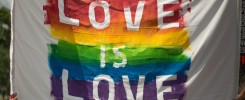Misconceptions and antipathy towards lesbian, gay, bisexual, transgender and queer/questioning (LGBTQ+) people have caused immense harm across history. While progress occurs unevenly worldwide, many medical and psychological professionals now recognize same-gender attraction and diverse gender identities as normal variations of human experience, not disorders. Continued advocacy and education are vital to counter remaining stigma and promote equal rights regardless of sexual orientation or gender identity.
Defining Sexual Orientation and Gender Identity
Sexual orientation describes enduring patterns of emotional, romantic and sexual attraction. While commonly categorized as heterosexual, homosexual or bisexual, orientation occurs along a continuum. Gender identity refers to one’s inner sense of being male, female, both or neither. Discrimination based on either facet of identity causes significant stress.
Mainstream medical organizations no longer classify non-heterosexual orientations as illnesses. They recognize gender diversity beyond the male-female binary. Genetics, hormones and environmental factors likely shape sexuality and gender identity, but no definitive causes determine one’s orientation or gender.
Developing self-awareness of identity is a normal process of adolescent maturation. Some LGBTQ+ people come out or disclose their identity at young ages if supported, while others may take years to acknowledge and share their truths due to fear of rejection. Coming out often improves mental health and wellbeing, but should only be done when safe.
The Damages of Prejudice
Anti-LGBTQ+ stigma, discrimination and violence have been widespread historically. Though increasingly contested in public discourse, harmful biases persist. The oppression faced by sexual and gender minorities leads to clear detrimental impacts:
- Increased anxiety, depression, self-harm risk and suicidal ideation
- Social isolation and family rejection, youth homelessness
- Bullying, harassment and assault in schools
- Barriers to healthcare and social services
- Workplace discrimination, income instability
- High victimization rates of violence, even homicide
Cultural stigma often causes LGBTQ+ people to conceal their identity, which exacerbates mental health struggles. Legal reform, public education and visibility of queer communities remain vital to countering these damages. Affirmation allows both youth and adults to thrive as their whole selves.
Responding to Enduring Myths
Regrettably, misconceptions impugning LGBTQ+ people remain commonplace. However, research consistently disproves prevailing myths:
MYTH: Homosexuality is unnatural and abnormal.
FACT: Same-gender attraction has been documented across eras and cultures. All major medical organizations recognize LGBTQ+ orientations as normal human variation.
MYTH: Being LGBTQ+ is a choice or lifestyle.
FACT: No evidence suggests people can change their innate sexual orientation or gender identity. Facing harsh stigma, no one would choose to be queer in hostile societies.
MYTH: LGBTQ+ people cannot form stable relationships or be good parents.
FACT: Studies show same-gender couples equally satisfying and committed relationships to heterosexuals. Children of queer parents show normal development and wellbeing.
MYTH: LGBTQ+ people threaten children and society.
FACT: There is no link between homosexuality or gender diversity and pedophilia or predation. LGBTQ+ people are productive citizens seeking to live in peace while being their authentic selves.
While these false narratives sadly retain cultural influence, communicating accurate information is crucial.
Building a More Equal Future
Ending mistreatment based on sexual orientation and gender identity remains an ongoing human rights struggle. Achieving dignity and inclusion for all requires:
- Enacting legal protections against discrimination in housing, employment, healthcare and public accommodations.
- Improving cultural competence in mental healthcare, schools, workplaces and religious communities.
- Funding support programs and shelters for at-risk LGBTQ+ youth.
- Inclusive public education and sexuality curriculum covering LGBTQ+ experiences.
- Countering negative media representations and promoting positive visibility.
- Trainings and policies advancing safety and welcoming climates in public spaces.
- Anti-bullying initiatives in schools and online.
- Alliance-building with allies committed to equality and acceptance.
A just society makes room for all consensual relationships and identities. Though overcoming deeply entrenched biases remains challenging, a brighter tomorrow becomes possible through tireless advocacy, boundless empathy and ceaseless hope.
Key Takeaways
- Same-gender attraction and diverse gender identities are natural variations, not illnesses.
- Stigma and discrimination severely damage LGBTQ+ wellbeing.
- Research shows myths about LGBTQ+ people as abnormal or dangerous to be false.
- Legal reform, cultural change, education and mental healthcare access remain vital needs.
- Supportive families, schools, workplaces and communities allow LGBTQ+ people to thrive.
- A welcoming society embraces the dignity and humanity of all people.
Prejudice will not disappear overnight. But step-by-step, society moves closer to affirming each person’s inherent worth when fear gives way to understanding, ignorance transforms into empathy and hatred is overwhelmed by love.
Reference
- Sefton Sexual Health. “What Does LGBTQ+ Stand For?” Sefton Sexual Health, 2021, https://www.seftonsexualhealth.nhs.uk/lgbtqi/what-does-lgbtq-stand-for/.
- Wikipedia contributors. “Social isolation.” Wikipedia, The Free Encyclopedia, 9 Nov. 2021, https://en.wikipedia.org/wiki/Social_isolation.
- Cherry, Kendra. “Bullying.” Psychology Today, Sussex Publishers, 25 Jan. 2020, https://www.psychologytoday.com/us/basics/bullying.


